19.10.2005
PEARL OF THE DAY №12 : CAPRICES OF WEAK-SIGHTED LADY
In my modest forecasts of the last days I do not try to generate excessive excitement, as it seems to me, but the reality turns out to be even more harmless. Just to be accurate, I will show my cards for the next round. Topalov plays as Black with Kasimdzhanov. No one has forgotten Tripoli, and there is no use to remind what Rustam has done to Anand in San Luis. Let us call the most banal stereotypes for help: the FIDE world champion Uzbek Kasimdzhanov, as any other Eastern man, has to be guileful and revengeful, but as any wise monarch he also has to be generous and fair. Having lost to Topalov in the first half, he thirsts for the revenge, and at the same time he tends to give a chance to defeated Anand. But we can leave this rubbish apart. There is just a situation when a very strong grandmaster plays White, and his opponent, whoever he is, has to produce weighty arguments to get a draw. Topalov still has managed to find such arguments for every opponent, but his condition (looking from outside, of course, because we cannot know what goes on in Veselin's heart) is well-known to many chess players, mainly by playing in the Swiss events. You win all the games in the beginning, and the gap is big enough, but once you lose a single game, it all disappears: the pursuers are near you, the mood has changed, and the opponents do not become weaker. So the leader should keep the momentum, and meanwhile he succeeds in it. Thus, according to that notorious love for order, let us exclude Morozevich from the list of the candidates for the victory and leave Anand and Svidler there. By the way, two latter ones would hardly get along together; for that Veselin has to lose both remaining games, Vishy and Petya have to win in the round 13 and end their game in a draw on the last day. In this case three players will share 1st-3rd spots with a penalty shootout to follow. It is an absolutely unreal, though grand picture. Anand is on the rise now. Having put off the burden of being a favorite, he began to play in relaxed and strong manner. He got the best results in the third four-round segment: 3 points out of 4, and his results in the second half are comparable to Veselin's. Svidler scored another victory, and Topalov allowed himself to rest between the second and the third free days, ending all the games in a draw (maybe, he had a «rest from deeds» entry in his schedule). Kasimdzhanov, Morozevich and Adams also got 2 points during that period – and I told you Mickey is making progress! Judit got one and a half points, but this is great in comparison with her failure in the middle of the tournament. And of course Leko shocked everyone. One of the candidates for the victory seemed to have come to his senses, and for sure his fans expected him to be at least among three first players – and suddenly he only gets 1 point out of 4! His game with Anand that concluded this sad segment for Peter, will be exactly the topic for of our cock-and-bull stories of today's Pearl of the Day. Two encounters of the round 12 were hard positional struggles that naturally led to a draw. The main game of the day had nothing combinational in it also, and the only hard thing was not to flounder in making 20 theoretical moves. I will not blame the grandmasters: Veselin deserved the right to make a draw from the position of strength, and, bearing in mind the Bulgarian's play in San Luis, Peter had no reason to plunge into a whirlpool. The following game illustrates the dangers of deviating from the theory, even when playing with white pieces. I will show some variations, made up in haste, but I am more interested in the situation itself, and I will tell about it a bit later. 1.e4 e5 2.¤f3 ¤f6 3.¤xe5 d6 4.¤f3 ¤xe4 5.d4 d5 6.Ґd3 ¤c6 7.0-0 Ґe7 8.c4 ¤b4 9.Ґe2 0-0 10.a3 ¤c6 11.cxd5 Јxd5 12.¤c3 ¤xc3 13.bxc3 Ґf5 14.¦e1 ¦fe8 15.Ґf4 ¦ac8 16.h3 Ґe4. 17.¤d2. Here comes a novelty. This is the move that was alluded to by the annotators of the first game of the Brissago match. Leko had chosen a position without risk in his typical manner: 17.Ґe3 ¤a5 18.c4, but lost nevertheless, although for psychological reasons. With inclusion of 17.Ґe3 ¤a5 the possible choice is 18.¤d2, and 18...Ґxg2 can be met by 19.c4 Јc6 20.d5 Јg6 21.Ґh5 Ґf3+ 22.Ґxg6 Ґxd1 23.Ґf5, winning material. That was the reason why Black retreated 18...Ґf5 in the Laznicka-Stopa game (Poland 2004). And here he can capture on g2, as there is no direct refutation. It is clear that Anand had to foresee such course of events, but Leko had to prepare even better if he chose this variation. 17...Ґxg2 18.Ґg4. In case of 18.c4 Јf5 white bishop is also under attack. By 19.Ґg4 Јxf4 20.Ґxc8 ¦xc8 21.ўxg2 Јxd4 White wins an exchange, but gives away two pawns for it, destructs his pawn structure, and his king's cover becomes weak. It should be rejected. 18...Ґh1. 18...¦cd8 19.c4 Јxd4 20.Ґe3 does not suit, and White wins a piece. Moreover, he also has 19.Ґxc7 at his disposal. However, 18...f5 is possible with exemplary continuation 19.Ґe2 ¤a5 (in case of 19...b5 White, besides 20.c4, has an interesting resource 20.a4!?) 20.c4 Јxd4 21.Ґe3 Јf6 22.ўxg2. White has won a piece, and although his bishop is caught, black knight gets in danger immediately afterwards. Look where does this captivating fuss lead: 22...f4 23.¤f3 (23.Ґxa7 ¦a8) 23...Јg6+ (or immediately 23...fxe3 24.Јd5+ Јf7 25.Јxa5 exf2) 24.ўh1 fxe3 25.Јd5+ Јf7 26.Јxa5 exf2 27.¦f1. A piece for three pawns and lack of clear positional guiding lines. Probably, both opponents must have had some idea about this position, or about how to avoid it advantageously. Anand, according to his own reasons, chooses another move. 19.f3 Ґh4!? 20.¦f1. Here computer advises to play 20.¦xe8+ ¦xe8, but then it admits that White has advantage neither after 21.ўxh1 h5 or 21...¦e1+ 22.Јxe1 Ґxe1 23.¦xe1 f5, nor in case of 21.Јb3!? Ґxf3! (a double-edged ending arises in case of 22.¤xb3 f5 23.Ґh5 g6 24.ўxh1 gxh5 25.Ґxc7 ¦e3) 22.Ґxf3 Јf5 23.Јxb7 ( 23.Ґxc7 Јg5 is bad with Black's obvious advantage; if 23.Ґxc6, then 23...Јxf4 24.Ґxe8 Јg3+ with perpetual check) 23...¤d8 24.Јxc7 Ґg5! The piece is regained, and the position is a more or less equal. I will repeat once more, I have no wish to compete with Anand or Leko in the art of analysis. In any case they drive quicker than I run. An average chess player with the help of Fritz cannot study a given position as deep as grandmasters and their assistants, who run it on good computers for days and even weeks. What I really can do is state with confidence: the cited variations were studied and they got qualified assessment. So let us make several natural moves together with Anand and Leko. 20...f5 21.Ґh5 g6 22.ўxh1 gxh5 23.¦g1+ ўh8. The forced stage is over. If Leko did not have this position at home, then his analysis is not worth a pin. Maybe, he supposed that the chances are at least even: a candidate for the world leadership could not play for a worse game as White deliberately. Of course, he lacks a pawn, but in the current structure it does not play an important role. However, in ten moves White will have a hopeless position. And Anand hasn't made any supernatural moves! 24.Јf1 Ґf6 25.¦b1 ¤e7 (protecting on f5 and preparing с7-с5 in case of ¦b5) 26.Ґg5 Ґxg5 27.¦xg5 ¦g8 28.¦xg8+ (after 28.¦xh5 ¦g7 Black seizes control over the g-file, no explanation of possible troubles is required) 28...¦xg8 29.Јe2 ¤g6 30.¦b5 Јc6. Black put his queen and knight on the most natural squares. Next Leko's move allowed Anand to pick one by one all weak pawns without spending much energy. He returned some material during the realization, but delivered mate. No further comments. 31.¦xf5?! Јxc3 32.¦d5 Јxa3 33.ўh2 Јf8 34.Јe6 Јf4+ 35.ўh1 ¦f8 36.Јe2 h4 37.¦d7 ¦f7 38.¦d8+ ўg7 39.¤e4 Јxf3+ 40.Јxf3 ¦xf3 41.¤c5 b6 42.¤e6+ ўf6 43.¤xc7 ¦xh3+ 44.ўg1 ¦d3 45.¤b5 ўg5 46.¤xa7 h3 47.¤c6 ўg4 48.¦a8 ўg3 49.¦a1 h2+ 50.ўh1 ¤f4 51.¤e5 ¦e3 52.¦d1. 52...ўh3 53.¤f7 ¦g3. White resigns. I always distrusted the statement that computer kills chess. Ok, maybe we will find out that White wins the game playing 1.е4. However, a human still cannot remember all the variations. In pre-computer era two chess-lovers just played and were not disturbed by the fact that the chosen opening is rejected as defective by grandmasters' theory and practice. Maybe, I exaggerate, and the fact that almost everything is known in contemporary theory is an important factor really. And what is the result? Instead of complaining, «It is impossible to play, it is high time to change the starting position», one has just to sit down, struggle and win? Yes, it is marvelous! We have a free day to think it over seriously.
P.LEKO-V.ANAND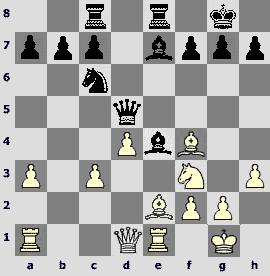
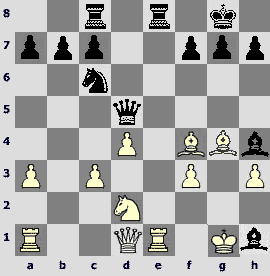
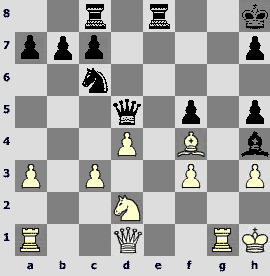
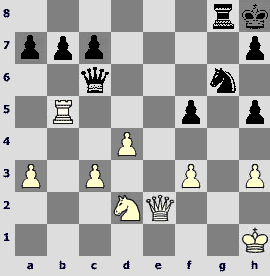
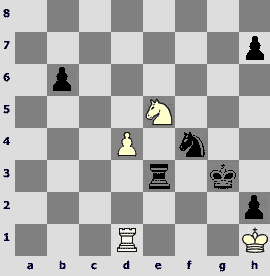
How can it be understood? So many times wise people told me, that «those guys» had studied the Petroff thoroughly during the preparation. (And I heard that about Kramnik as early as during his match with Shirov). In preparation for Brissago there surely were some findings. And finally Kramnik plays with Adams and Anand in Sofia. A single side move – not a novelty, which immediately poses new problems for Black, but just a rational piece move from one square to another – and the classical world champion Kramnik gets a hopeless position in a few moves. And here the situation is practically the same. Another fresh example is the Motylev-Tkachiev game of the Higher League in Kazan. Vlad together with Leko prepared the Marshall on the highest level, but one opponent's harmless move was enough to unsettle him. Ok, let us suppose that every defeated grandmaster was not in the best condition that day. However, if everything is studied and written down in the copy-book, then one just had to sit and show the preparation, even having high temperature and spleen.
ALL ARTICLES BY AUTHOR
